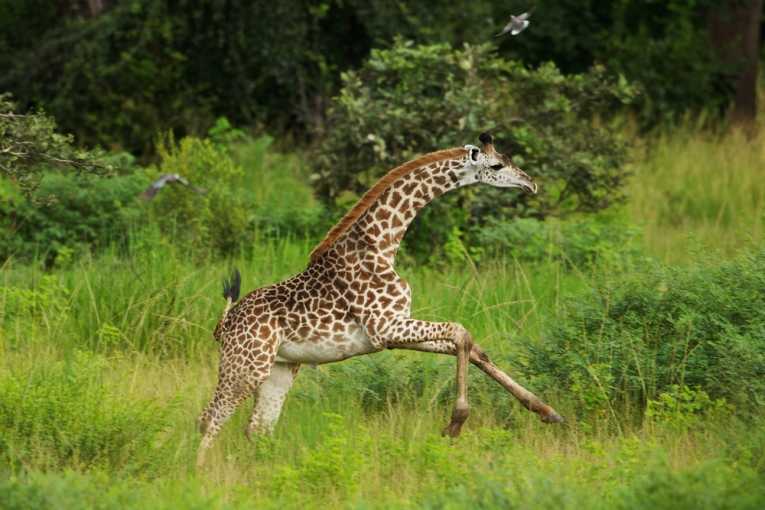When we age, ladies like to do it gracefully while men don't always. In Thornicroft's giraffes (Giraffa camelopardalis thornicrofti) living in Zambia, there is a pigment change as males age. Over 36 years, Berry and Bercovitch have observed how the "pelage" varies in colour, especially when the spots change from sienna-brown to coal- black blotches.
In fact, within only 1.8 years, young males gain their coal-black colour before they are 9 year old in some cases. As they live to 16 years, with an assessed maximum of 22 (28 for females), there seems to be room for significant matches with maturity and other life events.Captive animals give such misleading results that wild studies need to be carried out. This means that a method of ageing the males could be very useful as a tool to identify certain stages when wild studies are being pursued. This biomarker is assessed in the Journal of Zoology article, written while the two authors were working in Mfuwe which is in Zambia, the Primate Research Institute & Wildlife Research Centre of Kyoto University, Japan and the Giraffe Conservation Foundation, Surrey, England.
In the Luangwa Valley near Mfuwe, this distinct giraffe subspecies is endemic, with a national park to protect it in southern areas and game management available. Forest, woodland, grassland, scrub and thicket vegetation suit the giraffe well with herds illustrating how mobile the species can be when unrestricted. The males in particular could travel far from their birth-place.
Significant changes in the darkening spots and their use in ageing were the main concern of the study. Recognition of the unique coat patterns was simple, but as the "blotch" darkened from the centre, records were kept of ten males from birth and a further 16 individuals for an average of 10.44 years. Silverback gorillas have been aged in a similar "silvering" study. The authors term their results a, "life-history profile," recognising birth dates where possible and maturity and death in many individuals, between 1970 and 2003. Death (or disappearance) could come from lion attack or several common circumstances. The brown to black change could take as little as 0.75 years and as much as 3.63 years. Nine bulls died during the progamme, only the lion kill being identifiable from birth to death at 16.2 years. The study established an interesting period between maturity and death for these fine tall guys - that averaged only 5.76 years. This helped to estimate whether a disappearance was probably down to death or emigration.
Results indicate an average lifespan for this variety in this location as just over 15 years. Maximum life span was also estimated. Just over 18 years was the statistical result, with one or two reaching over twenty years old. In the whole population, a male could only expect to live a maximum of close to 21 years. Ladies of course, as we mentioned, can expect a further six years or so.
Not much point in celebrating your 21st in that case!










